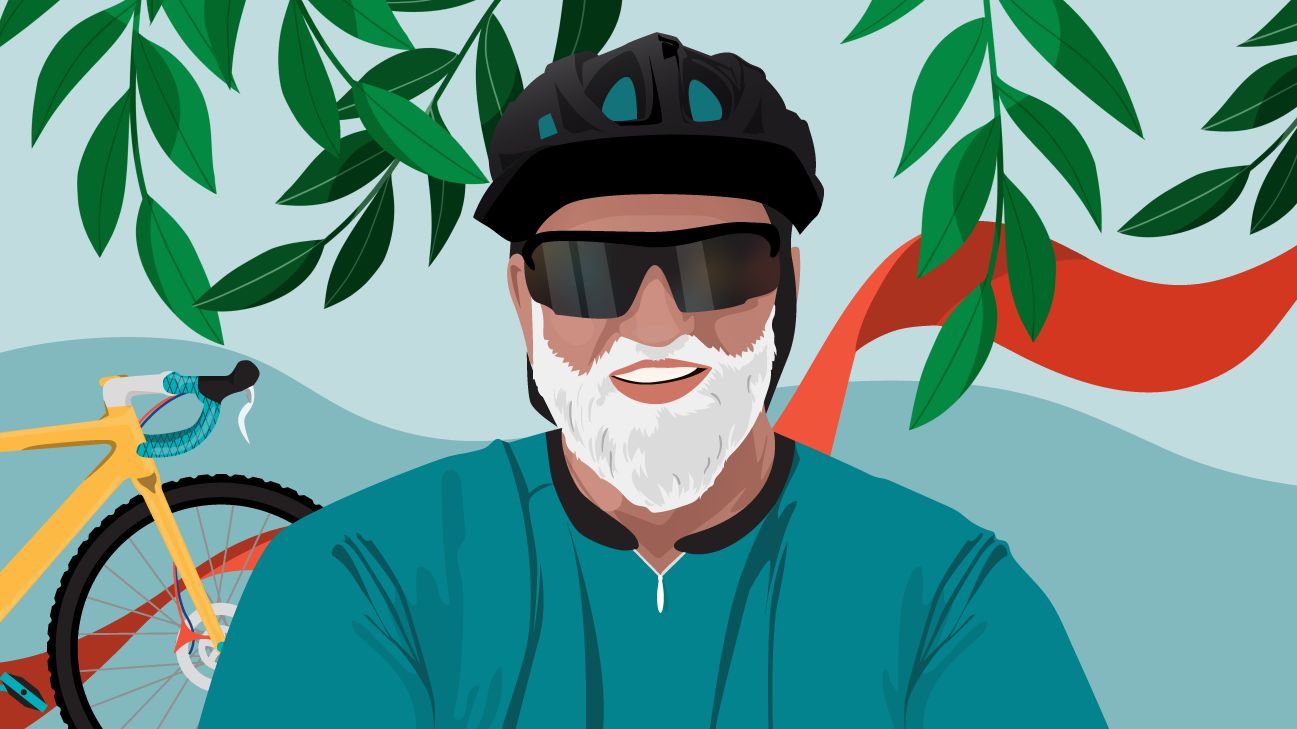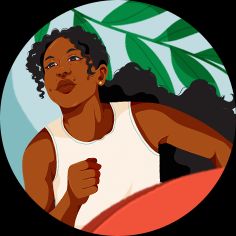Bob Sharpley’s love of cycling helped him manage his new type 2 diabetes diagnosis and reach new milestones along the way.

Bob Sharpley’s type 2 diabetes diagnosis didn’t arrive at a very convenient time.
It was September 2022. He was 61 and had just retired from a career as a teacher.
A couple of weeks earlier, he and his wife Gayle had also begun the biggest home move of their lives — downsizing from a 5-bedroom home to a condo, a process that took 3 months.
While some of his family members had type 2 diabetes, Bob hadn’t yet received a diagnosis. He figured he was the exception since he’d always been so active.
Bob had been big into sports and exercise since he was a kid, including cycling, ultra-running, ultra-swimming, soccer, mountain biking, and mountain climbing.
But the avid cyclist had decided to quit biking for a few months to devote his time to the move.
“For 3 months, I didn’t exercise at all except for filling a truck full of furniture, which is exercise, but it’s not aerobic,” he explained. His nutrition went downhill, too. “We were in the middle of a move … so we were eating what we could get.”
He went in to see the doctor at a neighborhood emergency clinic and came back with a type 2 diabetes diagnosis.
“I was mortified,” he said. “My biggest fear was, and still is, to have a limb amputated!”
Since he couldn’t easily access medical care, he decided to take matters into his own hands.
“I knew that I needed to do something drastic,” he said. “I knew that it couldn’t be a half-measure. It had to be serious. It had to be committed.”
He shifted his lifestyle rapidly, but one step at a time.
He still has pizza, but these days, he often prefers a cauliflower crust, and he splits one pizza with his wife rather than having a whole one to himself.
Drinking more water is one surprisingly powerful dietary change that’s brought down Bob’s blood sugar levels.
“Water is a miracle,” he said. “I can bring down a [blood sugar] spike with simple water by 40 points … At first, the trips to the restroom are a pain, but eventually your body gets used to it, and it’s not such a hassle.”
Renewing his exercise routine was also crucial to managing Bob’s diabetes.
He followed the lead of a friend with the condition who, 15 years earlier, had experienced similar health challenges. The friend found he could manage his blood sugar if he cycled 1 hour and 30 minutes daily.
Bob set the same benchmark for himself.
Although he was still in the process of moving homes, he got back into exercise right away after his diagnosis.
“Right at first after my diagnosis, the first thing I did was walk down the block and come back — like one-eighth of a mile,” he recalled.
He progressed from there, going around the block and then building up to 4 miles of walking.
The approach started working, and he saw his blood sugar readings decrease as his diet and exercise changed.
But he felt a little uninspired with the activity. “I can do walking … but Lord help me, it’s boring,” he said. “So 2 hours into it, I’m like, ‘You know, I can do 2 hours on the bike with my eyes closed.’”
So he returned to a physical activity he loved — cycling — starting at 2 hours per day and reaching about 20 miles or more.
The home move finished on December 24, 2022, and he’s slowly upped the ante since then. Now, he can do that same distance in around 1 hour and 30 minutes and regularly rides up to 108 miles.
Bob had always been an active person, but never like this.
By November 2023, a bit more than a year after his diagnosis, he had clocked 7,000 miles since the beginning of the year, far more than in previous years.
“I had never gotten past 5,000 miles [per year] in my life,” he said. “I always dreamed of going back and riding with a premier team here in town like I had done years ago, so I improved to the extent that I was able to lead their B group comfortably.”
Bob uses his love of biking to give back to others, too.
He runs a charity called the Bike Bank, where he fixes up donated bikes and gives them to people who need them.
He also supports friends training for fundraising bike rides, like a friend with multiple sclerosis (MS) who recently completed a ride of 46 miles in a little over 4 hours.
“We both say that we need to move to live, both for different reasons,” he said. “But movement is life!”

